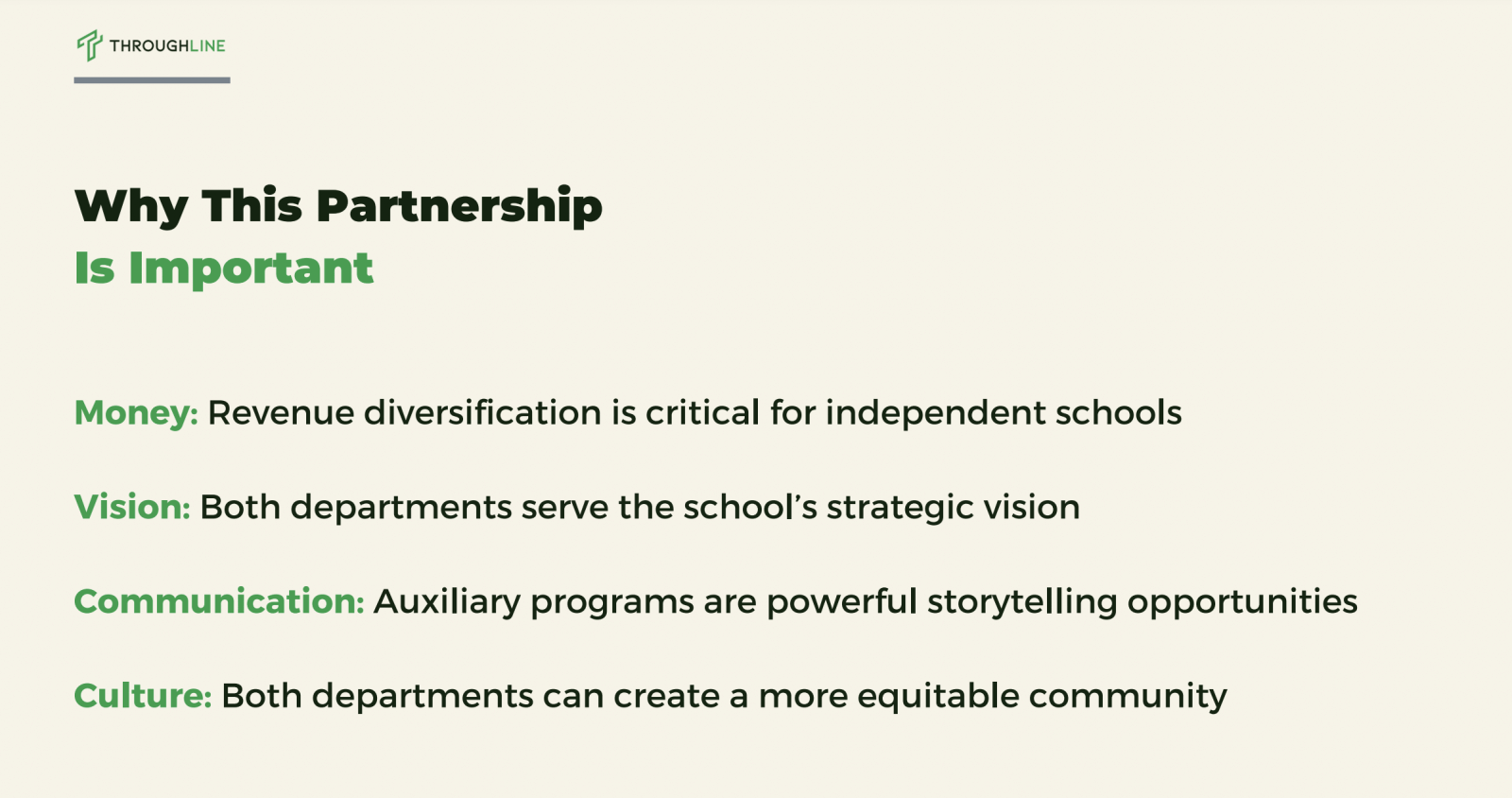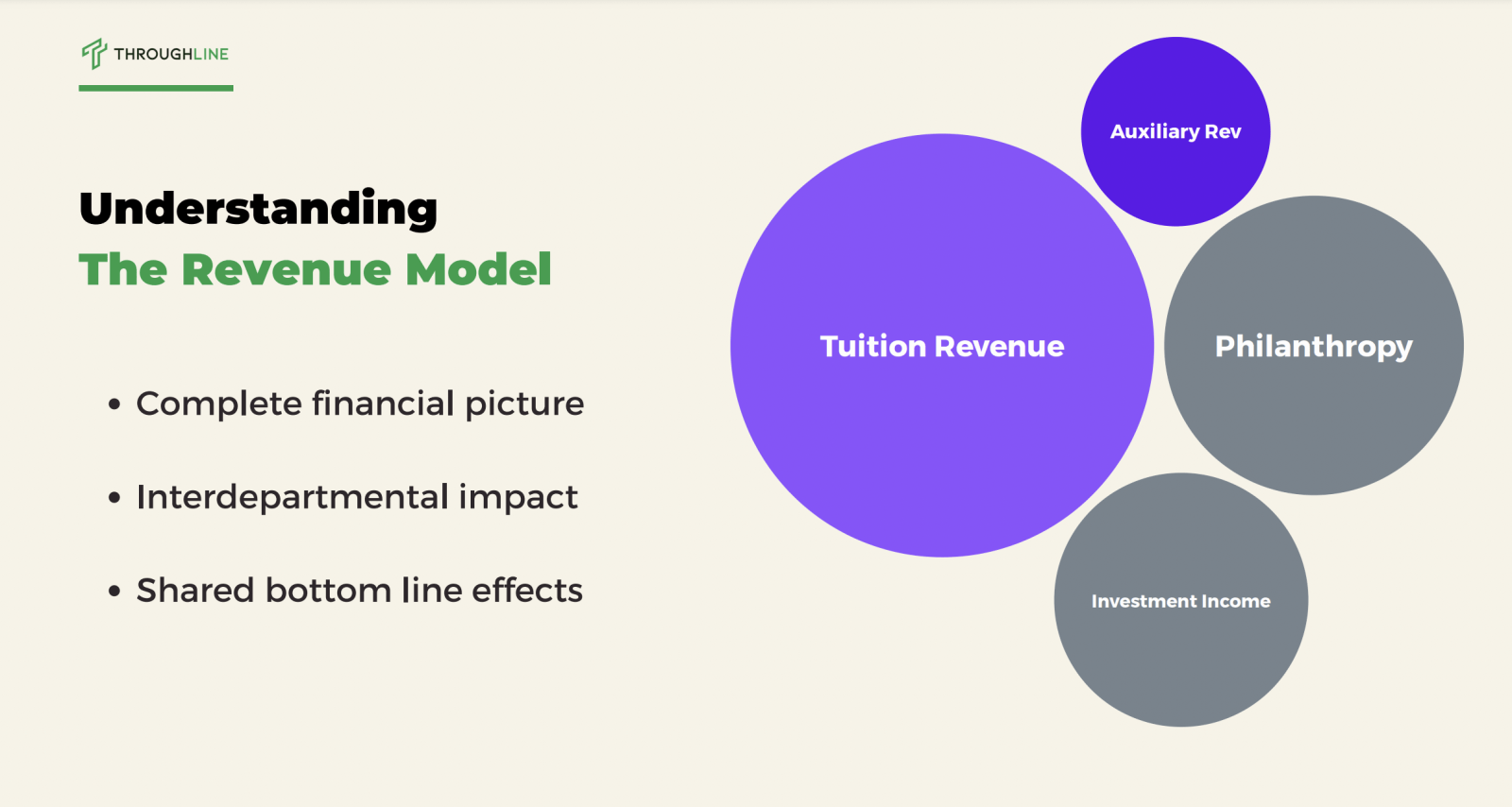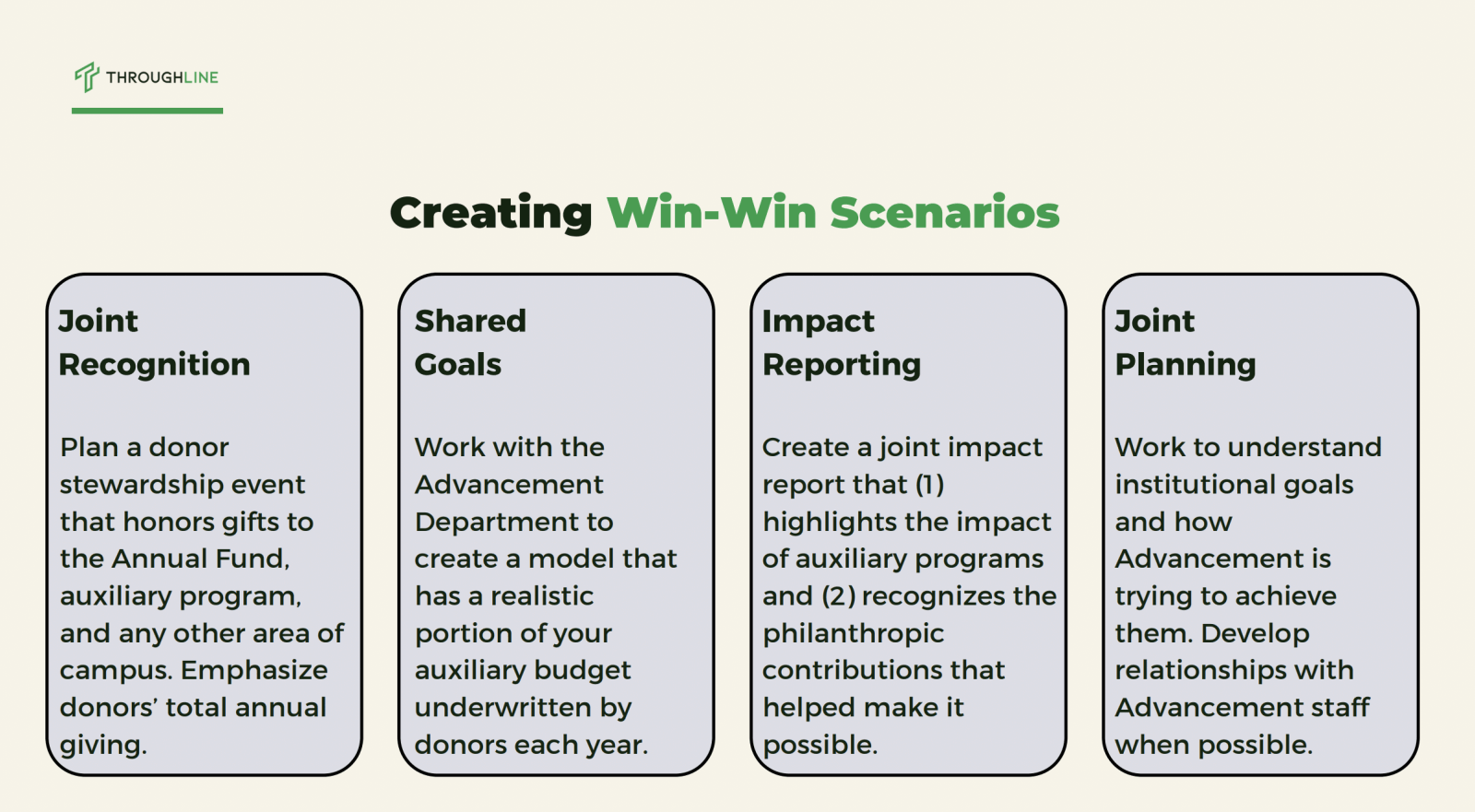Auxiliary and Advancement: 5 Steps Toward a Deeper Partnership
As a product of an independent school education, Mattingly Messina knows first-hand the powerful impact a great school can have on a student's life. He later served as a trustee and president of his former school's alumni association. He left a career in tech, became an in-house legal negotiator at Google, then shifted gears to become the Director of Advancement at Bentley School before launching Throughline, whose focus is fundraising and development.
Mattingly's recent SPARC webinar made clear his passion for Auxiliary and Advancement joining forces to serve their school's mission and goals, especially in schools that are mid-size or smaller. “As independent schools progress, trying to find ways for departments to collaborate is going to be more and more important," he says. “What can we do when schools are resource constrained, when there are staffing constraints in place, and how can these small schools have the biggest philanthropic impact possible?”
1. Recognize The Importance of the Relationship Between Auxiliary and Advancement
 An integral part of making a collaboration possible is recognizing that an independent school is a business.
An integral part of making a collaboration possible is recognizing that an independent school is a business.
“There’s some resistance to acknowledging that independent schools are businesses and that school administrators are running a business. We are most often a nonprofit business, but a business nonetheless.”
Building a partnership with Advancement can be challenging because school departments are often siloed off with no regular communication or joint strategizing. Given how busy we are doing our own jobs, it can be difficult to see how the work we're doing can impact other departments.
This disconnect can lead to gaps in communication, which then leads to distrust and missed opportunities. Departments develop a mindset of competition for resources and funds. Advancement may feel a sense of ownership over regular donors.
But, says Mattingly, "schools are becoming too complex and challenging to allow for siloed departments. We need to work together."
2. Understand the School's Business Model
Start with taking the time to familiarize yourself with the school's business, or revenue, model.
 This model is what the Head and Board are always thinking about, which makes it essential that Auxiliary prioritize learning how it works.
This model is what the Head and Board are always thinking about, which makes it essential that Auxiliary prioritize learning how it works.
Most schools have four “revenue buckets” that vary in size by school: tuition revenue, Auxiliary revenue, philanthropy, and investment income.
What happens with one area of revenue affects all the others. For example, changes in enrollment, whether intentional or unintentional, might lead to necessary shifts in revenue or fundraising goals, investment strategy, Auxiliary revenue goals, even the scope and scale of programs. Auxiliary revenue also impacts all areas, potentially relieving some stress on other departments.
"It's important that we understand how we all play a role in this model," Mattingly says, "and that we all have our frustrations and joys with where we sit in the model."
3. Break Through Common Myths
According to Mattingly, Advancement worries about "donor cannibalization." This fear is based on an assumption that donors who give to the school are prioritizing the school and not donating elsewhere, and if they're given multiple options, they will split their giving into smaller chunks.
In fact, Mattingly states that high-capacity donors tend to donate in multiple areas of philanthropic interest. Inviting them to specify where they'd like to donate--whether to Auxiliary, to a specific program, a scholarship, or capital campaign--encourages them to give more and to feel more engaged in how their money works for the school.
Advancement may believe Auxiliary is not relevant to what they do, but they are best placed to reach out to families, especially to unenrolled families who may become potential applicants and donors. As the most external-facing department, Auxiliary can be a vital part of fundraising.
4. Practice the Fundamentals of Building a Relationship with Advancement
 Every department varies with its own set of challenges and strengths. Prioritizing these four key steps, however, will go a long way toward breaking down those silo walls to develop trust and collaboration between departments.
Every department varies with its own set of challenges and strengths. Prioritizing these four key steps, however, will go a long way toward breaking down those silo walls to develop trust and collaboration between departments.
More regular communication: Establish monthly or bi-monthly check-ins, meet regularly to share information like progress toward revenue goals sign-ups, and enrollment.
Transparent goals: Sharing which goals you're working toward helps break down they mystery of what the other department is thinking.
Joint projects: Suggest collaborations. Even small things done together help--ask for a shout-out in newsletter, invite Advancement staff to a parent coffee or to do a webinar—this builds trust and integrates work.
Share successes: Celebrate Advancements’ success, share your own successes with other departments, ask Advancement to share their challenges and goal achievements, and offer to help when possible, especially to connect with families.
5. Take the Next Steps
To move forward in building a collaborative relationship with Advancement, ask yourself some key questions.
- The “handoff” of families from enrollment to Advancement happens during the summer. How can you ensure that you’re part of that conversation?
- Most Advancement Departments have a calendar of cultivation and stewardship events. How can you get a member of the Auxiliary team to speak at one of them?
- Auxiliary Departments often know the school’s facilities inside and out. How can you be helpful to Advancement and share facilities issues that may need funding?
- Friction between departments is often due to a communications breakdown. How can you regularly provide updates about the experiences families are having?
Watch Mattingly Messina's entire webinar here.
Join SPARC today for access to professional development webinars like this one, as well as roundtable discussions, tools and worksheets, and unparalleled access to auxiliary community support.
